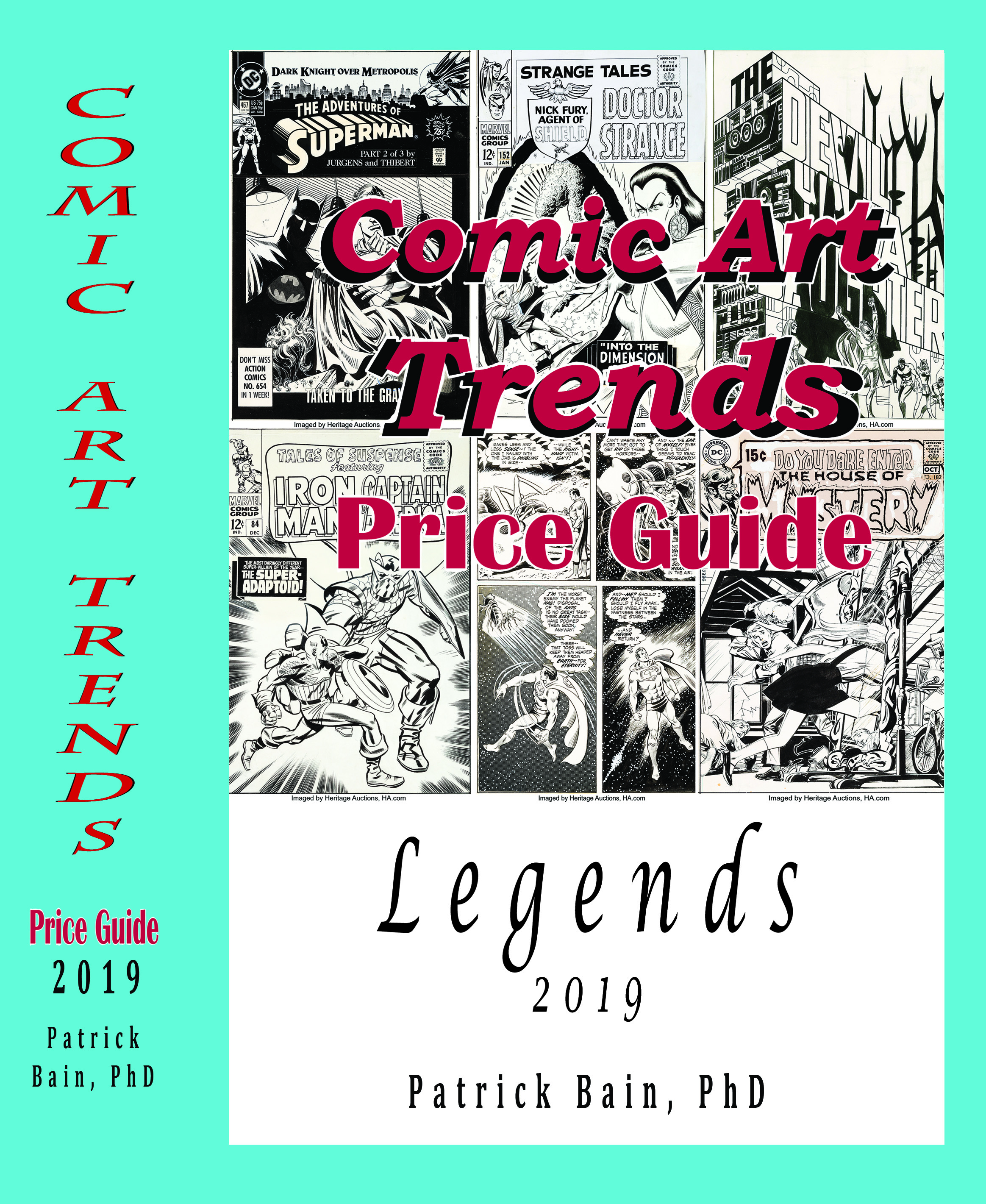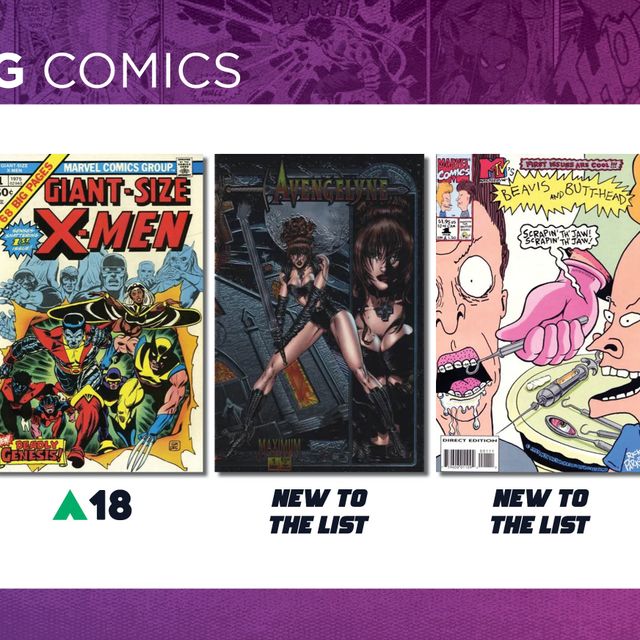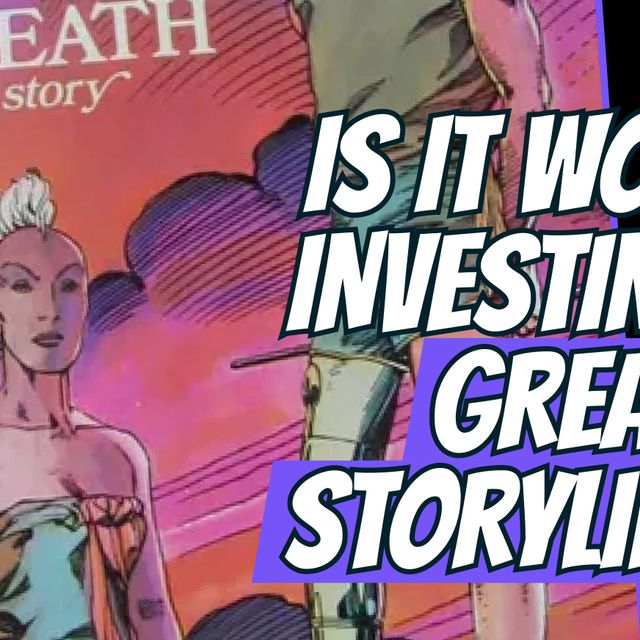Would you have paid 30 cents for a mint copy of Incredible Hulk #181? Woulda, coulda, shoulda—what would you have paid for original art from the prior issue featuring the first appearance of Wolverine? There is no time machine but there’s a time capsule from the past providing keen insight into the future! The time capsule I am looking at is the 1976 edition of the Overstreet Comic Book Price Guide. The keen insight is GoCollect trending market data identifying comics moving in the present leading to potentially hot artwork in the future.
This article has a simple premise… one of the factors affecting original comic art prices is readily apparent in GoCollect market data.
Before going on, let’s back up to the 30 cent Incredible Hulk #181 comic book. Who’s selling it for that price today… NO ONE! But pulling my 1976 price guide from the time capsule, it’s clear that the Mint price of issue 181 AND the issue with Wolverine’s first appearance were valued at a smoking 30 cents, just a nickel more than the original cover price. If you were fortunate enough to find that comic on the spinner rack at the drugstore in 1974 AND kept it in great condition, you are very happy today.
 Overstreet Price Guide 1976 Hulk 161-200 value listing
Overstreet Price Guide 1976 Hulk 161-200 value listingFor those cursing me for bringing up such a painful topic, please bear with my logic. In 1976, the listed value for all Incredible Hulk issues from 161 to 200 was 30 cents in Mint—no distinction based on any interesting features such as the introduction of a huge five-foot five-inch character in the Marvel Universe. Fast forward to 1983. Common comics from 161 to 200 were listed as worth about a buck-fifty, while issue 180 shot up to $6 in Mint, and issue 181 enjoyed the outrageous value of $20. Five years later, the respective listings nearly doubled to $10 and $36. Meanwhile, the common issues from 161 to 200 still listed at roughly a buck-fifty!
Ouch... What is it Selling for Today?
Actual recent sales of Incredible Hulk #181 gathered by GoCollect data miners popped with prices like $37,200 for a 9.8, $15,600 for a 9.6, $9,984 for a 9.4, and $6,650 for a 9.2! I included a wide range of near Mint to Mint prices because in 1976 there was no numerical grading system--only Good, Fine, and Mint. Humorously, in 1976, you couldn't find a listing for Incredible Hulk #181, it was simply Hulk #181. By the way, a copy of issue 181 graded 9.8 will soon blow away the $37,200 sale AND the GoCollect Fair Market Value of 34 grand. The current bid with the buyer's premium is only a few thousand short of the 50K mark! I will say it is a very nice clean copy. I would gladly pay twenty bucks... no, make it $36 bucks (guide value from 1988).
That's NOT New News!
Everyone wishes they had a copy of those legendary books! So, how does the explosion in the price of Wolverine's first appearance and the first full story in comics relate to original art? The price of original art follows a pattern similar to price escalations in comic book prices.
In the Comic Art Trends Price Guide, I identify some of the factors that impact comic book art prices. The first, and easiest, factor to recognize is the signature in the corner of the page. That is, no one is surprised to learn investors and collectors salivate over artwork by legends like Jack Kirby and Frank Miller. The artist's name is his brand and the best brands always command the most money. What else is important? Characters on the page: I would rather frame a picture of Spider-Man than Irving Forbush. It's hard to quantify, but a significant factor in the price of comic art is the intangibles. I’ll call it special features or special events. The first appearance of a major character—like Wolverine—is a special event to collectors. For that reason, a comic book jumps from 30 cents to 20 dollars to $50,000.
Finding the POP in Comic Art Action Plan
Thirty years ago, anyone could have looked at the Overstreet Comic Book Price Guide and observed issues 180 and 181 of Incredible Hulk valued higher than the $1.50 of common issues. With proper foresight, observers may have guessed that comic art from those issues would exceed the value of art from the common issues as well. For example, Page 32 of Incredible Hulk 180 features the first sighting of the Wolverine. Long time Marvel contributor Herb Trimpe illustrated that page. In fact, he did hundreds or likely thousands of pages of Hulk art. Many masterfully penciled pages by Trimpe prior to Page 32 and afterward sold for nice prices. But that page, the key page where Wolverine first appeared, sold for $657,250.
 Original art featuring the first appearance of Wolverine by Herb Trimpe
Original art featuring the first appearance of Wolverine by Herb TrimpeWhat did other Trimpe Hulk Art Sell For?
To reiterate, other Hulk pages from that era sold for around $1,500 to six thousand dollars a page on average, while the first appearance of Wolverine sold for 100 times that amount!
Circling back to the beginning of this article, a key factor affecting comic art is the “special event”. The money question is, how does one identify the “special event” art that may exceed the value of common art?
In the eighties, collectors drove demand for Incredible Hulk #180 and #181. Art from those key issues may have been more expensive than other art, but nothing compared to today’s prices. Likewise, some modern comics are experiencing the same POP. GoCollect offers fans the tools to identify fast-moving comics similar to what happened thirty-five or so years ago with Hulk.
You don't have a time machine. Take a lesson from the time capsule. The key is to look for potential growth art among those comic books experiencing wild demand--BEFORE that art enjoys stratospheric gains!




